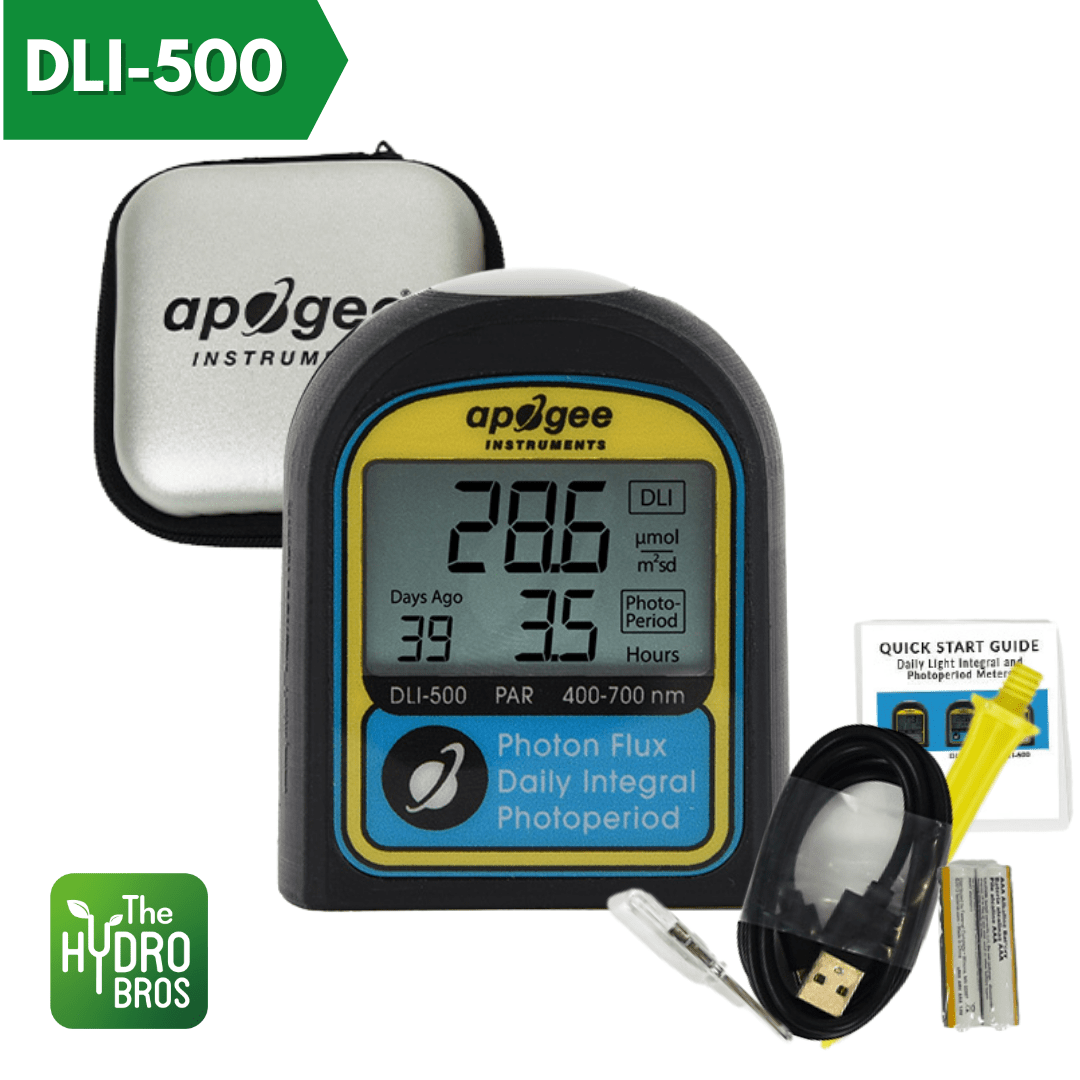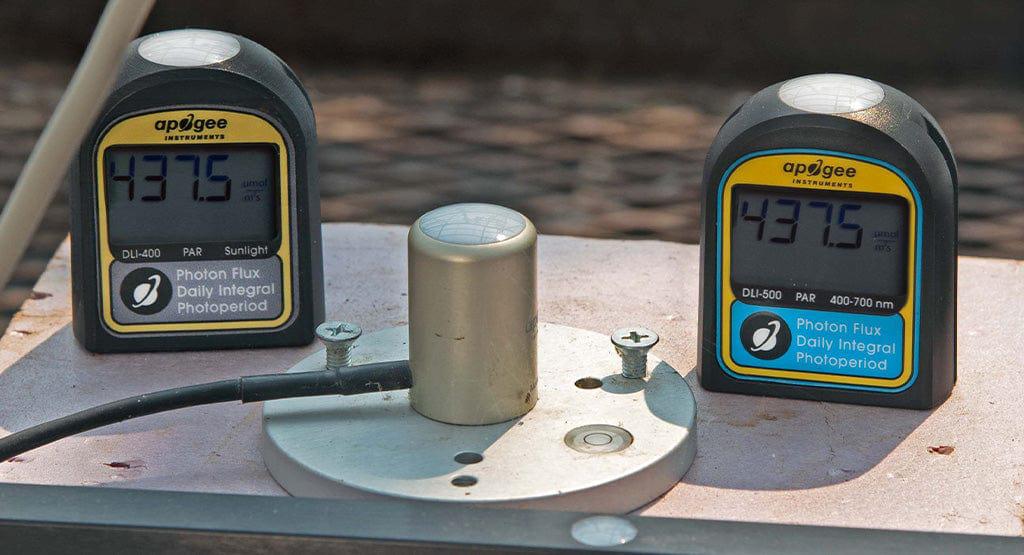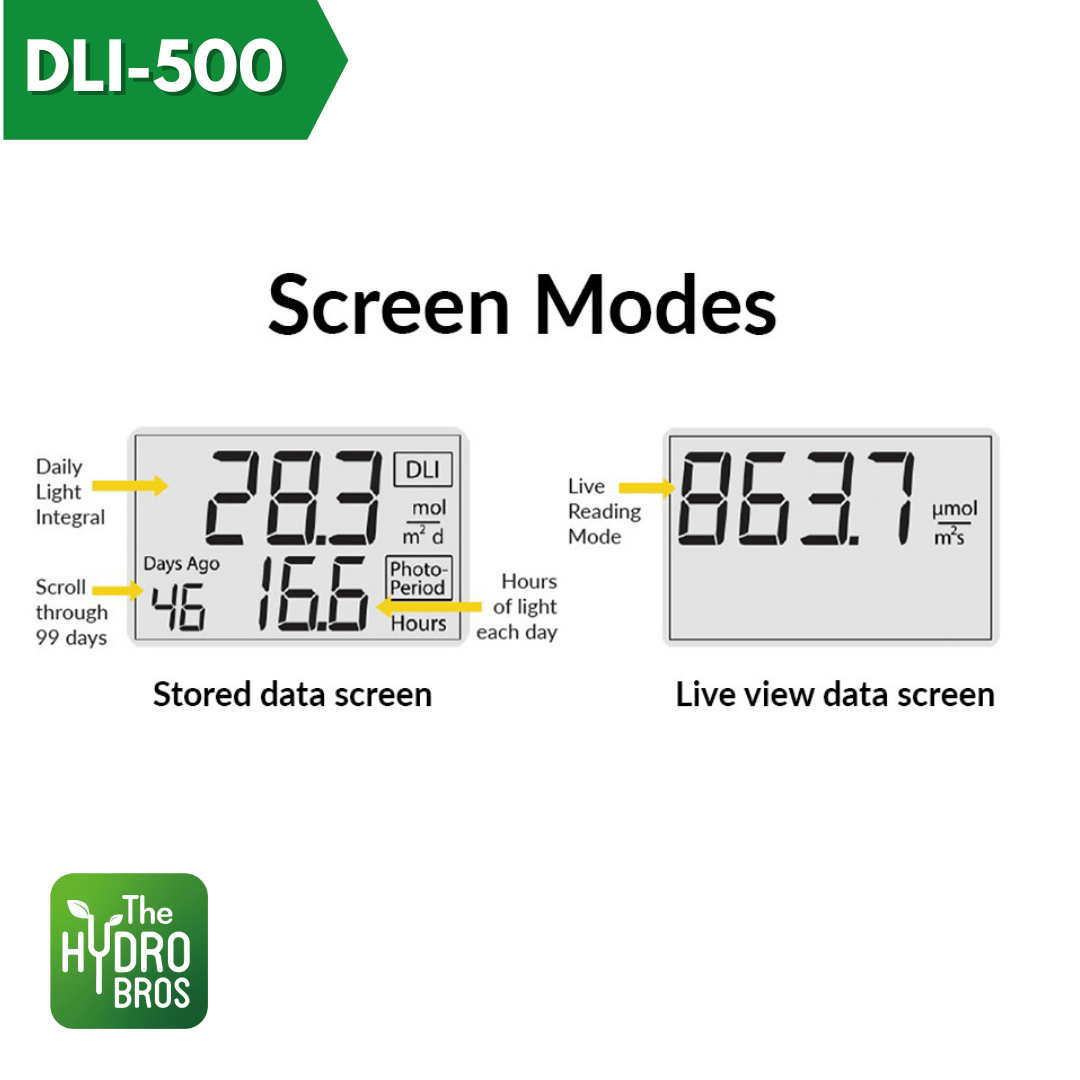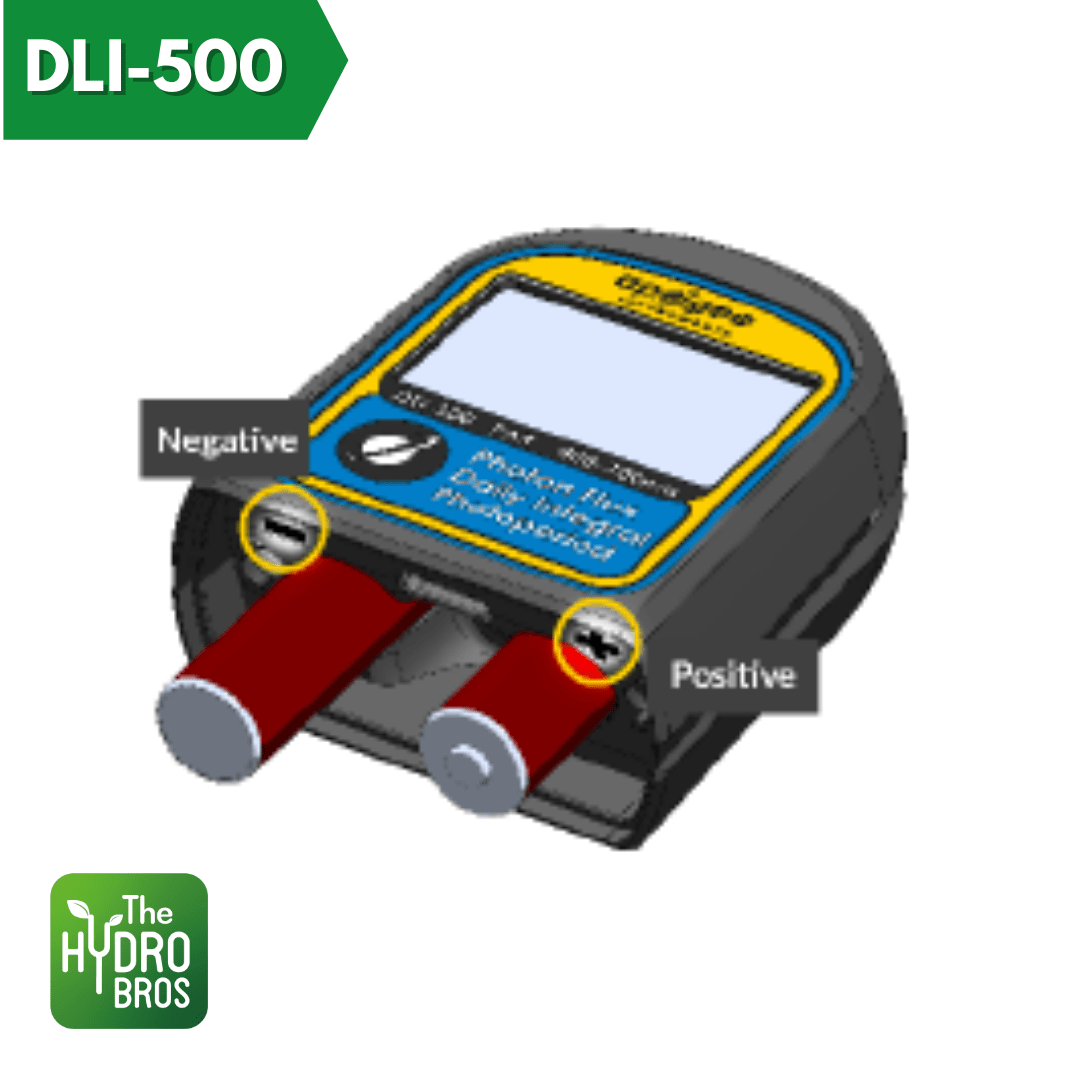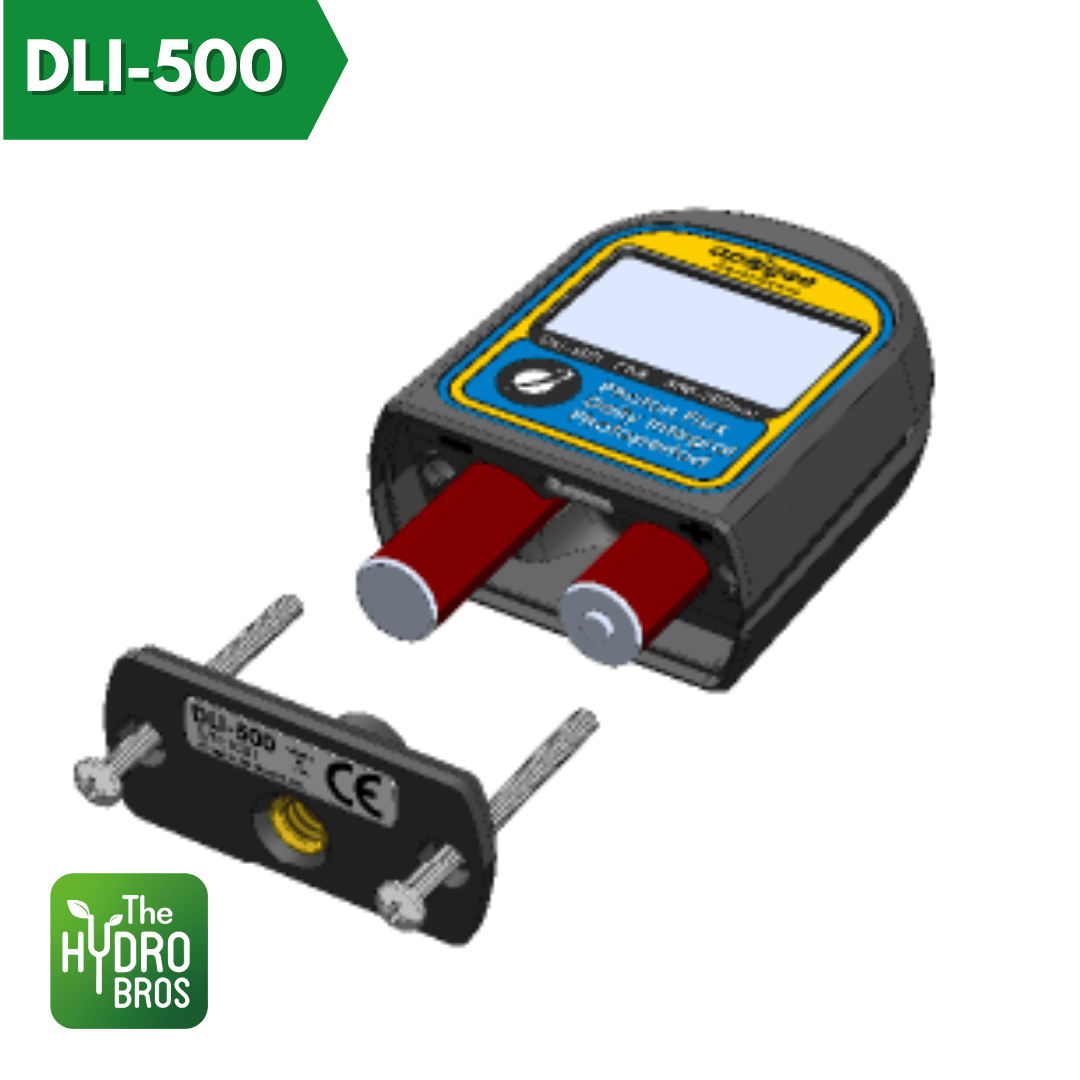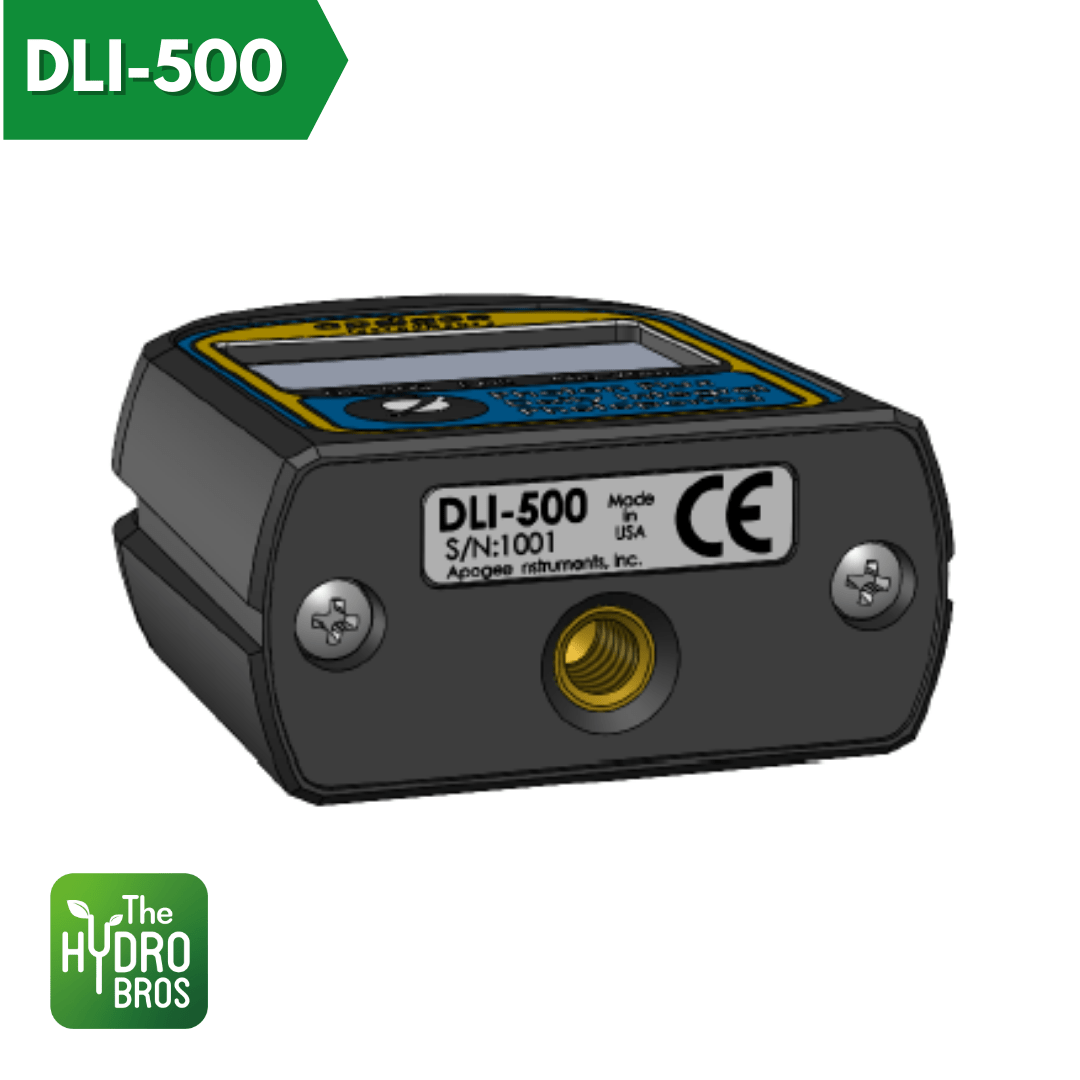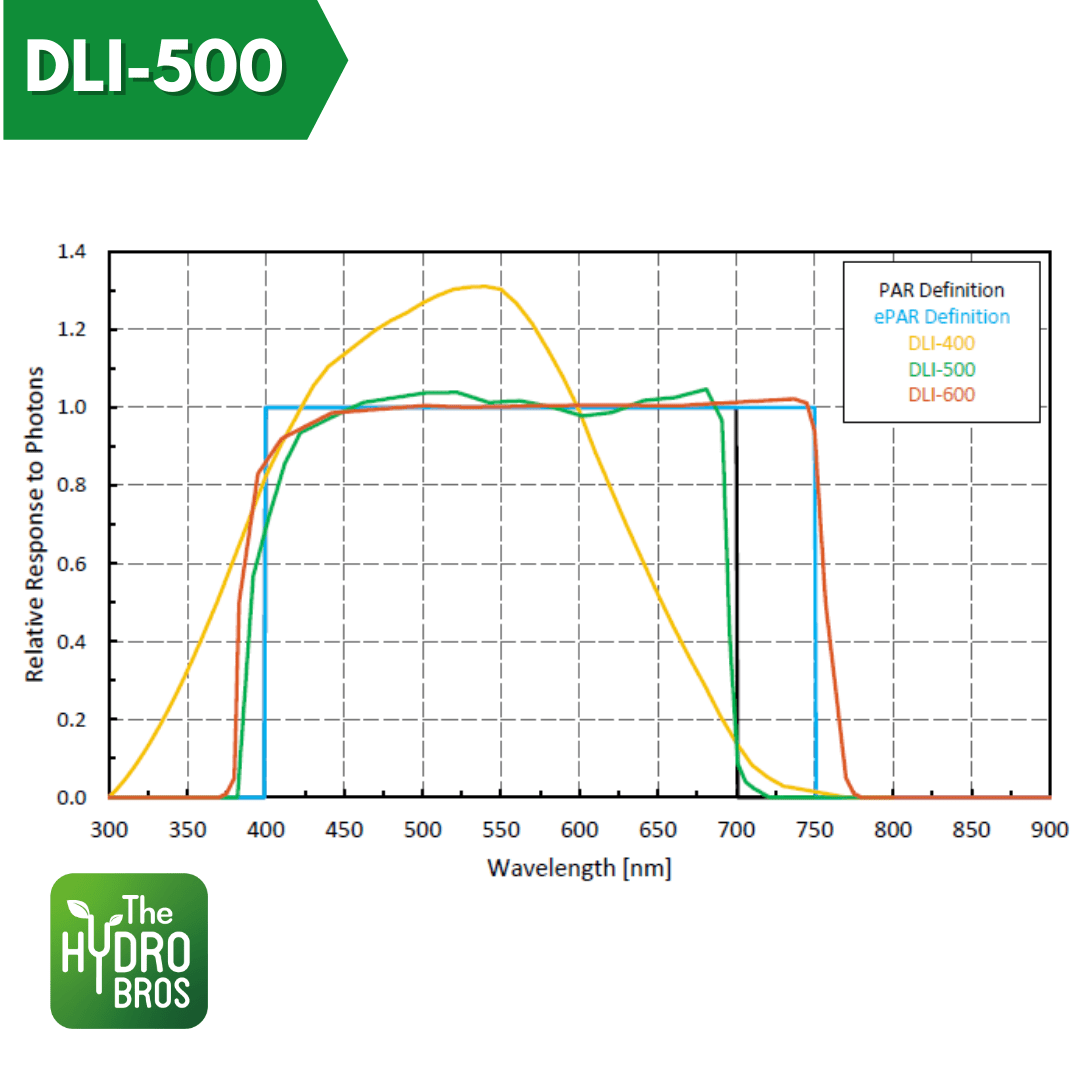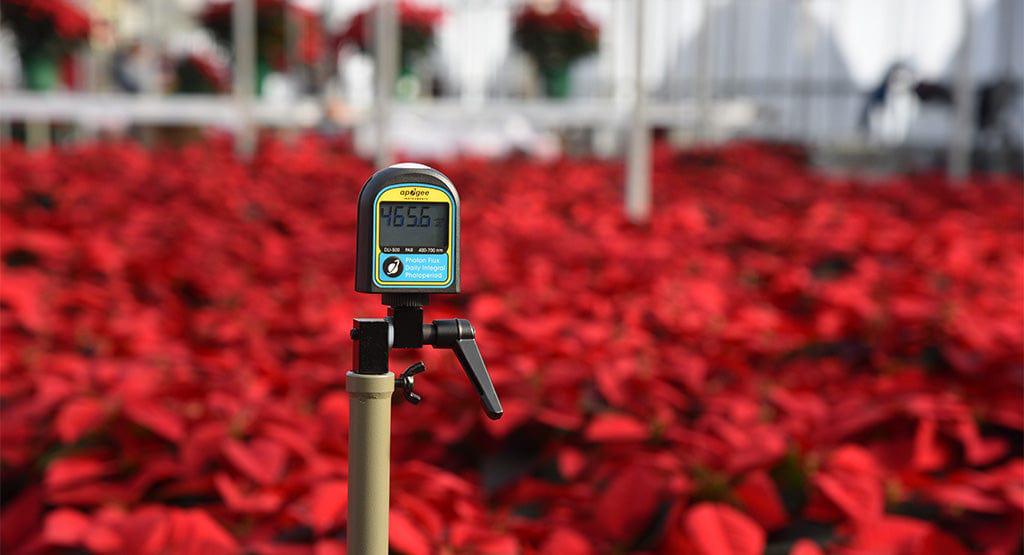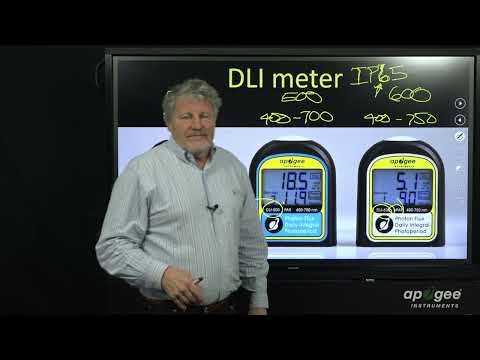Description
MEASURES BOTH PPFD AND DLI!
Know your PPFD! The Apogee quantum meters (AKA par meter) are the industry standard and tool of choice for professionals and scientists all over the world. Accurately measuring PPFD from all light sources. For those looking to dial in their grows, you need a good quality par meter...and Apogee is the king of meters and the choice of all the professionals.
What is the DLI-500? A handheld all-in-one sensor and meter that captures PPFD within the full photosynthetic 400-700 nm range under all light sources. Gives both a spot reading and the Daylight Integral (DLI). The ¼-20 threaded on the bottom can be used used to secure the meter in place and ensure consistent measurements. The mount also allows the use of the most commercially available camera mounts, tripods, and various stakes. The DLI meter comes with a yellow soil stake for easy, immediate deployment.
What is the difference between PAR and ePAR? PAR stands for Photosynthetic Active Radiation, which is the range defined back in the 1970s accepted as the range within the colour spectrum of light that plants use to photosynthesise. Fast forward to today, and studies have shown that far reds actually contribute to the rate of photosynthesis. Thus, the traditional range of 400-700, and technically then, we're under measuring the PPFDs that plants use to photosynthesis when measuring traditional 400-700nm. However, 400-700 is the scientific standard and is used by all light manufacturers when they provide PPFD readings. Won't be long though that they move to the ePAR range.
What is DLI? DLI refers to the total amount of PAR or extended PAR (ePAR) during a 24-hour period, expressed in units of moles per square meter per day (mol m-2 d-1). To translate that to English(!), DLI is a measure of the TOTAL amount of light the plants are getting in a 24hr period, as opposed to the single spot PPFD reading.
What's the difference between DLI-500 and the MQ500? The DLI-500 can capture the DLI data that can be downloaded via a normal simple USB-C cable. The form factor: The MQ-500 has a separate meter and sensor which can get into harder to reach areas, whereas the DLI-500 is all-in-one, whilst giving the same precise scientific accuracy as the MQ-500, which comes in cheaper as there are fewer components.
How is it used? You can accurately measure the PPFD over your plant canopy and ensure you hit that sweet spot of 600-900 PPFD (numbers based on current science literature). PPFD of 1000+ will require the use of supplemental CO2 in your grow room. Plants don't care how many watts you throw in your light..it's the quantity (number of umoles) and the quality (spectrum) output of the light that matters. Growers looking to dial it in, should be looking at the PPFD of their light relative to the number of watts (and of course the cost of the light).
In summary, Forget about watts (the input), it is actually the output that should be measured - this is PPFD (photon synthetic flux density) is the true measure of light that plants need.
What's in the box?
- DLI-500
- Carry case
- Mini mounting stake
- Quick Start Guide
- 2 x AA Batteries
- USB-C Cable
- Mini screwdriver
Apogee DLI-500 Technical Specs
With this tool, you can accurately measure the PPFD over your plant canopy and ensure you hit that sweet spot of 600-900 PPFD (numbers based on current science literature). PPFD of 1000+ will require the use of supplemental CO2 in your grow room. Plants don't care how many watts you throw in your light..it's the quantity (number of umoles) and the quality (spectrum) output of the light that matters. Growers looking to dial it in should be looking at the PPFD of their light relative to the number of watts (and of course the cost of the light).
Check out our article here for more info Apogee is led by Crop Physiology Professor (uber plant scientist), Bruce Bugbee (google him!). Apogee leads the field, set the standard, and create these instruments used by scientists the world over.

